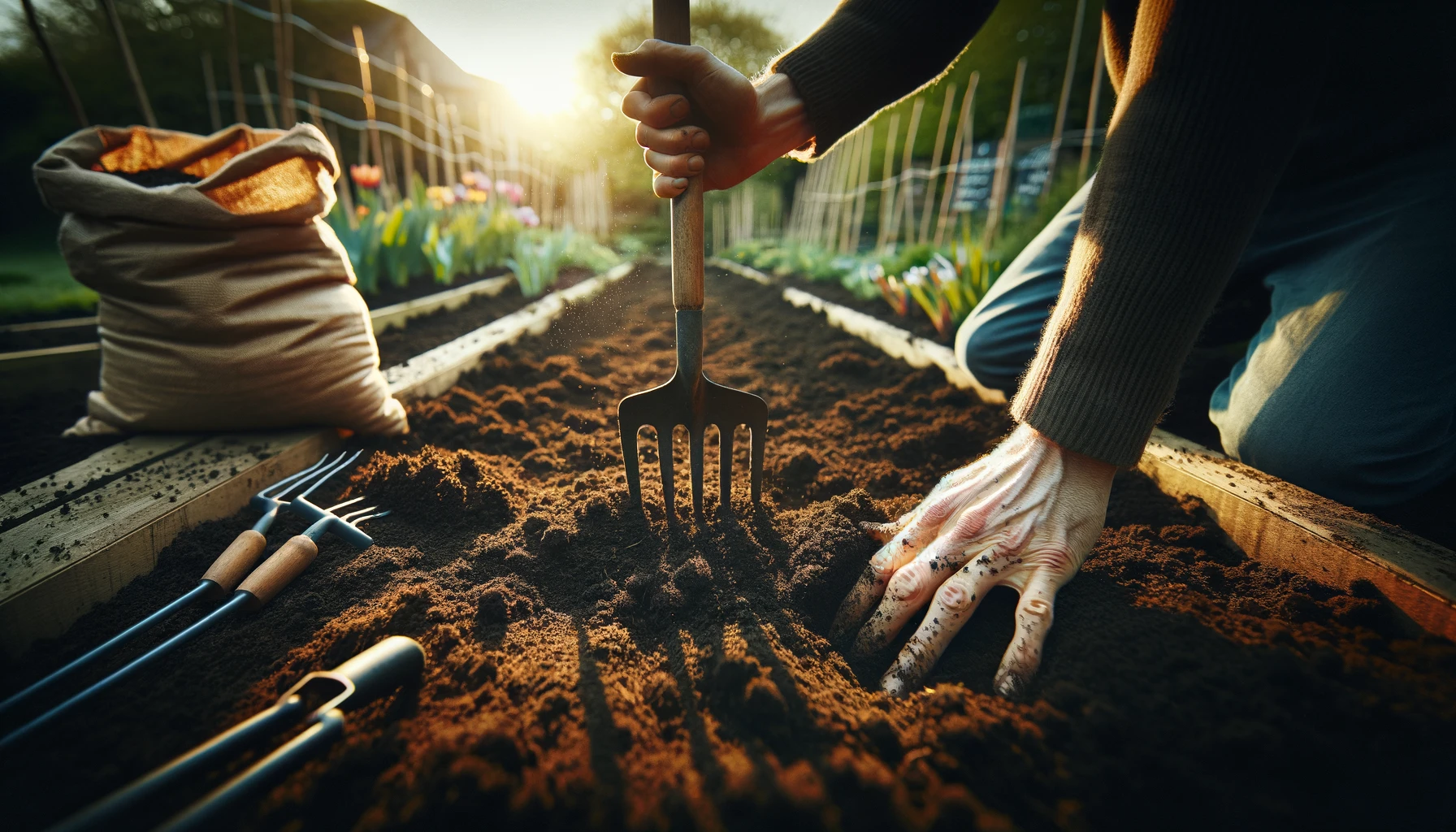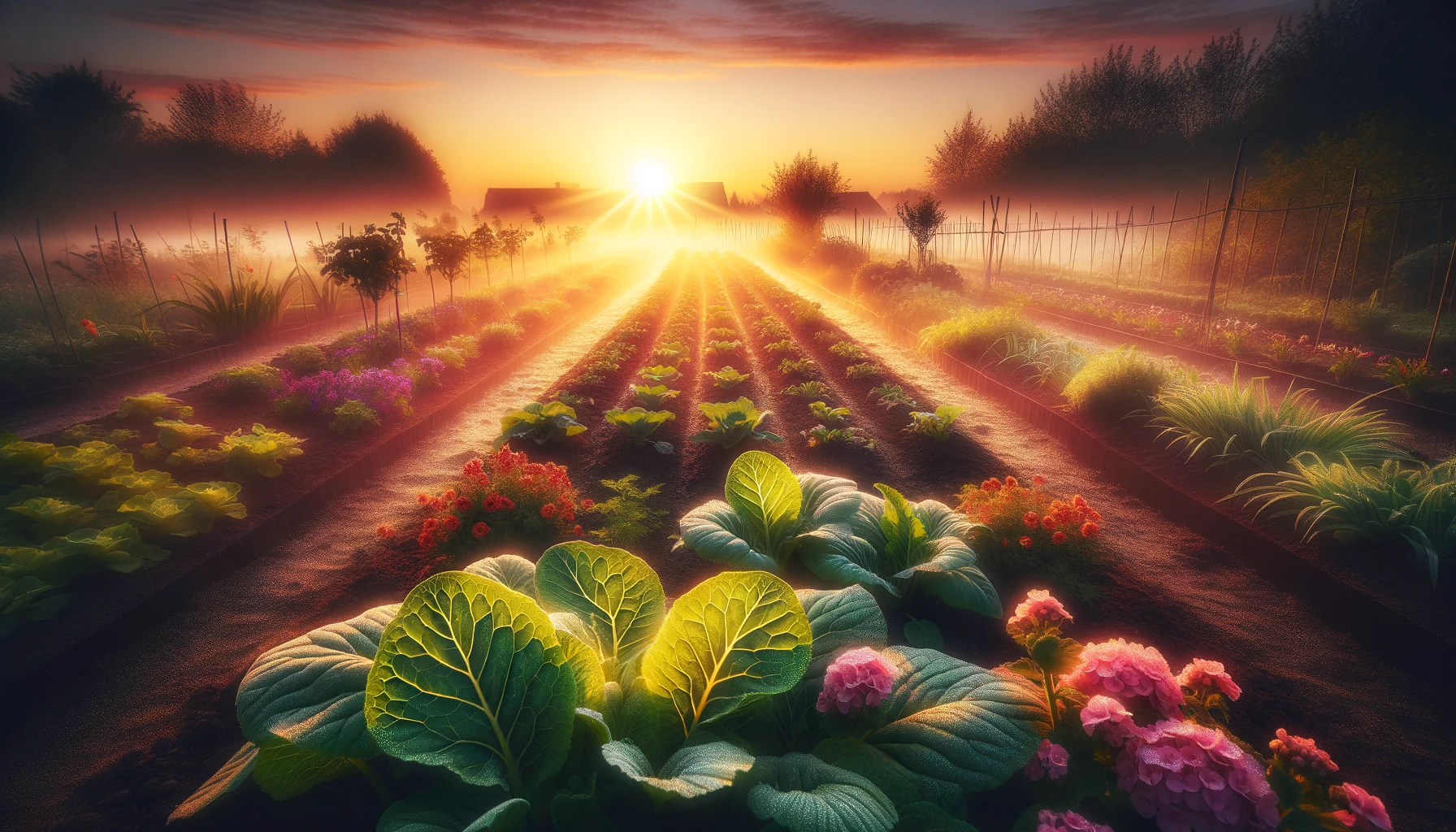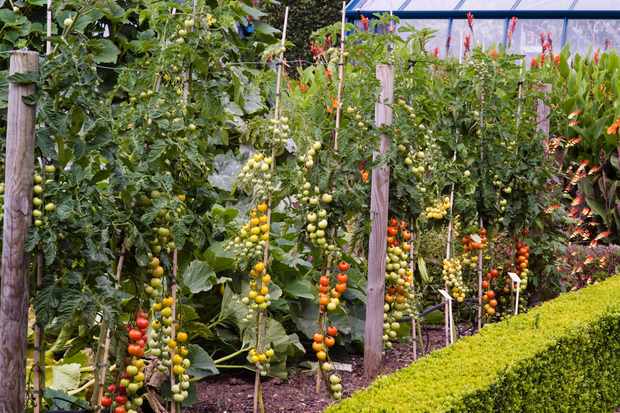Delve into the world of seasonal flower gardening with expert tips tailored for beginners. Unearth the secrets to cultivating vibrant blooms and creating a flourishing garden oasis. Get ready to witness your green thumb bloom as you navigate through essential advice on plant selection, soil preparation, watering techniques, and more. Whether you’re a novice gardener or looking to enhance your botanical skills, these practical insights will set you on the path to gardening success with quick tips for spring blooms and perennials. Embrace the joy of nurturing nature’s beauty right in your backyard while learning the ropes of seasonal flower gardening like a seasoned pro.
Key Takeaways
- Start small and gradually expand your seasonal flower garden to avoid feeling overwhelmed.
- Plan your garden layout carefully, considering factors like sunlight, soil quality, and water access for optimal plant growth.
- Follow planting guidelines for each type of flower, including proper spacing, depth, and watering requirements.
- Regularly monitor and adjust care routines based on seasonal changes to ensure healthy and vibrant blooms.
- Protect your garden from pests, diseases, and extreme weather conditions by implementing preventive measures.
- Increase flower production by deadheading spent blooms, fertilizing appropriately, and providing adequate support for climbing plants.
Getting Started

Gardening Zones
When starting seasonal flower gardening, understanding your USDA hardiness zone is crucial. Different zones have varying temperature ranges that impact plant growth. Researching your specific zone helps you select flowers that will thrive in your area.
Garden Planning
Location Selection
When planning your seasonal flower garden, consider factors like space, accessibility, and visibility. Ensure the area has proper drainage to promote healthy plant growth. Evaluate nearby structures for potential shade that could impact sunlight exposure.
Choosing a location with protection from strong winds and water is crucial for the well-being of your flowers. By assessing these elements, you can determine the ideal spot for your garden to thrive.
Soil Preparation

Before planting, clear the designated area of weeds and debris to provide a clean slate for your flower bed. Loosening the soil using a garden fork or tiller enhances root penetration and soil aeration. Incorporating organic matter such as compost enriches the soil’s fertility.
Preparing the soil properly sets a solid foundation for successful gardening endeavors. It creates an environment where plants can establish strong roots and access essential nutrients easily.
Plant Spacing
Adequate spacing between plants in your flower garden is vital to prevent overcrowding and competition for resources among flowers. Following recommended plant spacing guidelines promotes optimal air circulation, reducing risks of diseases spreading throughout the garden.
Properly spaced plants ensure each flower receives sufficient sunlight, water, and nutrients necessary for healthy growth and vibrant blooms.
Planting Basics
Best Practices
Watering plants in the morning is crucial as it helps prevent fungal diseases by allowing the foliage to dry quickly. This practice also reduces the risk of root rot by ensuring that excess moisture does not linger around the plant roots. Regularly inspecting plants for pests or signs of disease is essential for early intervention, preventing any issues from escalating and affecting other plants in your garden. Mulching around flowers serves multiple purposes such as conserving moisture, suppressing weeds, and maintaining a stable soil temperature.
Applying a balanced fertilizer to your seasonal flowers encourages healthy growth and vibrant blooms throughout the season. It provides essential nutrients that may be lacking in your soil, promoting strong root development and overall plant health. Pruning dead or damaged stems is beneficial as it stimulates new growth and improves air circulation within the plant, reducing the risk of diseases caused by stagnant air pockets within dense foliage. Opting for organic fertilizers like compost tea ensures that your plants receive natural nutrients without harmful chemicals that could potentially harm beneficial organisms in the soil.
Enhancing Growth
Support tall flowers like delphiniums or hollyhocks by staking them or using trellises to protect them against strong winds which can cause damage or breakage. By providing additional support to these taller plants, you ensure their stability throughout their growth cycle, preventing any potential damage due to inclement weather conditions. Tying stems loosely to stakes offers extra reinforcement, especially during periods of rapid growth when tall flowering plants are more susceptible to bending or breaking under their weight. Installing cages around taller plants further enhances their structural integrity by offering consistent support from all sides.
Seasonal Care Tips

Watering Importance
Consistent watering is essential for young plants to establish and develop strong roots. Deep watering encourages deep root growth, making plants more resilient during dry spells. Monitoring soil moisture levels helps prevent overwatering or underwatering your flowers. For example, marigolds thrive with consistent moisture but can suffer if the soil remains soggy.
Fertilizing Plants
Applying a slow-release fertilizer at planting time ensures continuous nourishment for your flowers throughout the season. Following the recommended dosage on fertilizer packaging prevents overfertilization, which can harm plants rather than help them flourish. Fertilizing flowering plants during their active growth stages promotes healthy blooms; petunias benefit from a balanced fertilizer to support steady flower production.
Weed Management
Regularly removing weeds by hand or using mulch is crucial to prevent them from competing with flowers for resources like water and nutrients. Applying pre-emergent herbicides before weed seeds germinate significantly reduces weed growth in your garden beds. Mulching flower beds with organic materials such as straw or wood chips not only suppresses weed growth but also conserves moisture in the soil, benefiting delicate annuals like impatiens.
Deadheading Flowers
Removing faded or spent flowers redirects the plant’s energy into producing new blooms, ensuring a longer blooming period throughout the season. Deadheading also maintains a neat appearance in your garden while encouraging prolonged flowering of your plants; snapdragons respond well to deadheading by producing multiple blooms along their stems when done correctly.
Protecting Your Garden
Environmental Factors
When planning your seasonal flower gardening, take into account environmental factors like wind exposure, frost dates, and microclimates. These considerations are crucial in selecting flowers that thrive in your specific conditions. For instance, protecting delicate blooms from strong winds can prevent damage to their petals and stems.
Understanding your region’s frost dates is essential for successful gardening. By planting at the right time and providing adequate protection for tender flowers during colder periods, you can ensure healthy growth and vibrant blooms. Creating windbreaks such as fences or shrubs can shield your garden from harsh winds that may harm delicate plants.
Pests and Diseases
Identifying common pests such as aphids or snails early on is key to maintaining a thriving garden. Once you recognize these pests, implementing suitable control measures promptly can help prevent widespread damage to your flowers. Regularly inspecting plants for signs of diseases like powdery mildew allows for early intervention before it spreads throughout the garden.
Incorporating organic pest control methods into your gardening routine promotes a healthier environment for both plants and beneficial insects. Utilizing solutions like neem oil or practicing companion planting not only helps keep pests at bay but also minimizes chemical exposure in your yard. By embracing these natural approaches, you can safeguard your garden while fostering a balanced ecosystem.
Maximizing Blooms

Blooming Seasons
When planning seasonal flower gardening tips for beginners, consider selecting flowers with staggered blooming periods. This ensures a continuous burst of color throughout the season. By combining early, mid, and late-season bloomers, your garden will showcase a dynamic and ever-changing display of flowers. Researching each flower’s specific blooming time is crucial as it helps in creating a well-coordinated garden that blooms at different intervals.
To maximize blooms in your seasonal flower garden, understanding the diversity of blooming seasons is key. For instance, planting a variety of flowers attracts beneficial insects like bees and butterflies to your garden. This not only adds beauty but also supports pollination and biodiversity in your outdoor space. Incorporating native plants further enhances this ecosystem by providing food sources for local wildlife while promoting overall environmental sustainability.
Diverse Ecosystem
When delving into seasonal flower gardening tips for beginners, remember that creating habitats within your garden can significantly impact its ecosystem positively. Consider adding birdhouses or butterfly feeders to attract these creatures to your outdoor space. These additional elements create an inviting environment for various species while contributing to the overall balance and vibrancy of your garden.
Incorporating diverse ecosystems into your seasonal flower gardening practices benefits not only the aesthetic appeal but also contributes to environmental conservation efforts on a smaller scale. Supporting local wildlife through native plantings fosters biodiversity while creating natural habitats within urban settings promotes ecological harmony.
Maintenance Strategies
Essential Care Tips
Regularly monitoring plants for signs of stress or nutrient deficiencies is crucial for successful seasonal flower gardening. By identifying issues early, you can intervene promptly and prevent further damage. Removing yellowing or damaged leaves not only promotes the overall health of your plants but also enhances their visual appeal. Proper ventilation and air circulation play a significant role in preventing the development of fungal diseases that could harm your flowers.
Effective weed control is essential. One method is to lay landscape fabric beneath mulch in flower beds to inhibit weed growth without harming your plants. Hand-pulling weeds before they have a chance to seed can significantly reduce future weed problems by preventing their spread throughout your garden. While herbicides can be used as a last resort, it’s best to apply them sparingly to minimize any negative environmental impact on your garden ecosystem.
Effective Weed Control
Implementing these care tips will go a long way in ensuring that your seasonal flower garden thrives throughout the growing season. Regularly checking for signs of stress or nutrient deficiencies allows you to address issues promptly before they escalate and affect plant health adversely.
Expectations vs Reality
Garden Evolution
Experimenting with different flower varieties and combinations is key in the world of seasonal flower gardening. As you explore various options, your garden will naturally evolve over time. Learning from your experiences, whether successful or not, helps you adapt your techniques for continuous improvement. By embracing change and being open to new ideas, you inject excitement and creativity into your flower garden.
For example, planting a mix of annuals like petunias and zinnias alongside perennials such as roses can create a dynamic garden that changes throughout the seasons. This experimentation allows you to discover which plants thrive in specific conditions while adding visual interest to your outdoor space.
Adaptation is crucial. One essential aspect is modifying watering frequency based on weather conditions to avoid issues like overwatering or underwatering. Protecting delicate flowers from frost by covering them overnight can extend their blooming period significantly.
Adjusting fertilization schedules according to plant growth stages ensures that your flowers receive the necessary nutrients for healthy development. By aligning feeding times with growth phases such as bud formation or flowering, you support robust plant growth without risking nutrient deficiencies or excesses.
Advanced Tips and Tricks

Functional Layout Design
When planning your seasonal flower gardening, consider incorporating pathways or stepping stones. These additions not only provide easy access for maintenance but also enhance the overall enjoyment of your garden. Grouping flowers with similar water or sunlight requirements is a practical approach that simplifies care routines. For beginners, this can streamline the process of tending to different plant species effectively.
Vertical gardening options are worth exploring as they allow you to maximize space utilization in small gardens. By going vertical, you can create a visually appealing display while optimizing the available area for planting various seasonal flowers. Imagine utilizing trellises or hanging baskets to add layers of color and texture to your garden design effortlessly.
All-season Planning
Researching flowers that bloom during different seasons is crucial for maintaining year-round color in your garden. This thoughtful approach ensures that there is always something vibrant and beautiful blooming regardless of the time of year. Planting evergreen shrubs or ornamental grasses contributes to visual interest during the winter months when many plants lie dormant.
Planning for seasonal changes allows you to enjoy your flower garden throughout the year without long periods of dullness due to lack of blooms. It’s like curating a living masterpiece that evolves with each passing season, offering new colors and textures as nature transitions through its cycles.
Final Remarks
You’ve now got a solid grip on the essentials of seasonal flower gardening. From planning and planting to maintenance and maximizing blooms, you’re well-equipped to kickstart your colorful garden journey. Remember, mistakes are a part of the process, so don’t get disheartened if things don’t go as planned initially. Keep experimenting, learning, and adapting your strategies to suit your garden’s needs.
Now that you’ve armed yourself with these beginner tips and tricks, it’s time to get your hands dirty and put your newfound knowledge into action. Start small, observe how your plants respond, and enjoy the therapeutic benefits of nurturing a beautiful garden. Your green thumb is just waiting to blossom—so go ahead and let it flourish!
Frequently Asked Questions
### How do I start a seasonal flower garden as a beginner?
To begin your seasonal flower garden journey, start by researching which flowers thrive in your region’s climate. Next, prepare the soil with organic matter and choose easy-to-grow varieties for beginners like marigolds or pansies. Lastly, ensure your plants receive adequate sunlight and water.
What are some essential tips for planning my seasonal flower garden?
When planning your seasonal flower garden, consider factors like sunlight exposure, soil quality, and plant spacing. Create a rough sketch of your garden layout to visualize where each type of flower will go. Remember to include a mix of annuals and perennials for continuous blooms throughout the seasons.
How can I ensure successful planting of flowers in my garden?
Ensure successful planting by digging proper holes that are deep enough for root growth. Gently loosen the roots before placing them in the ground and cover with soil firmly but not too tightly. Water thoroughly after planting to help establish healthy roots.
What are some key care tips to maintain healthy seasonal flowers?
Regularly check moisture levels in the soil and adjust watering frequency based on weather conditions. Deadhead spent blooms to encourage new growth and apply fertilizer sparingly according to plant needs. Keep an eye out for pests or diseases early on to address any issues promptly.
How can I protect my seasonal flower garden from common threats?
Protect your floral haven by installing physical barriers like fences or netting to deter animals from munching on delicate blooms. Use natural pest control methods such as companion planting or introducing beneficial insects like ladybugs. Stay vigilant against weeds that compete with your flowers for nutrients.






